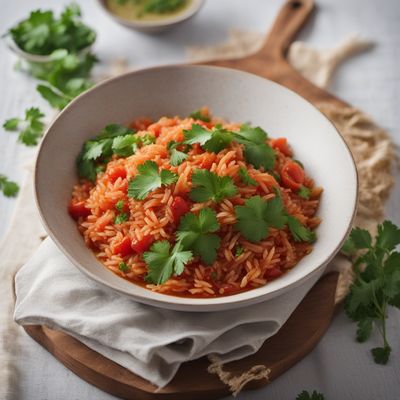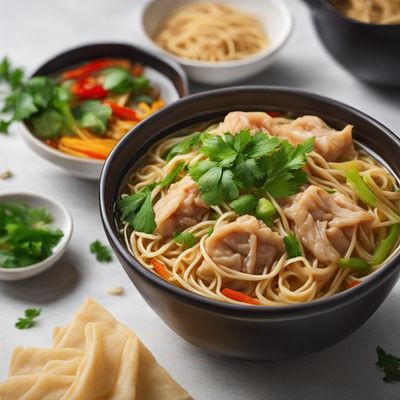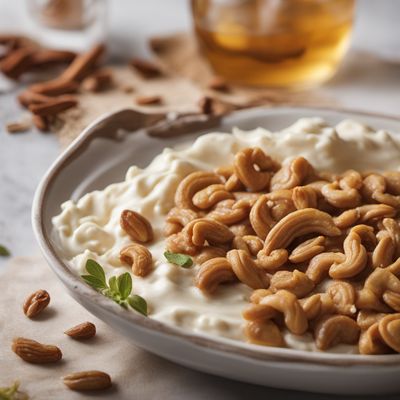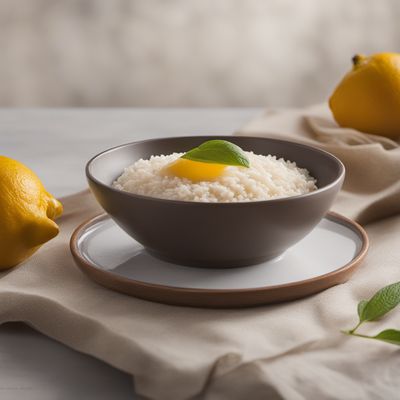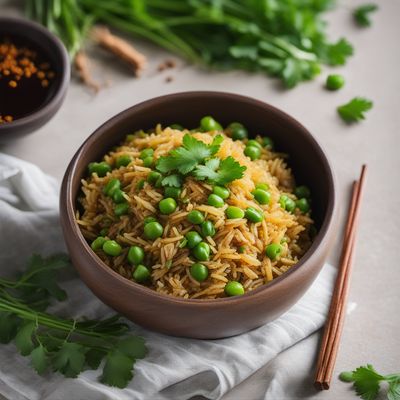
Recipe
Malaysian Chinese Style Queijada
Creamy Coconut Queijada with a Malaysian Twist
4.5 out of 5
Indulge in the rich and creamy flavors of a traditional Portuguese Queijada, reinvented with a Malaysian Chinese twist. This delightful dessert combines the velvety texture of coconut milk with the sweet aroma of pandan leaves, creating a unique fusion of flavors that will transport your taste buds to the vibrant streets of Malaysia.
Metadata
Preparation time
20 minutes
Cooking time
40-45 minutes
Total time
60-65 minutes
Yields
8 servings
Preparation difficulty
Easy
Suitable for
Vegetarian, Dairy-free, Nut-free, Gluten-free (if using gluten-free flour)
Allergens
Eggs, Wheat
Not suitable for
Vegan, Paleo, Keto, Low-carb, Soy-free
Ingredients
In this Malaysian Chinese adaptation of the Queijada, coconut milk is used instead of cow's milk to infuse the dessert with a creamy and tropical flavor. Additionally, pandan leaves are added to enhance the aroma and provide a subtle sweetness. These modifications give the Malaysian Chinese Style Queijada a unique twist, making it a delightful fusion of Portuguese and Malaysian flavors. We alse have the original recipe for Queijada, so you can check it out.
-
2 cups (470ml) coconut milk 2 cups (470ml) coconut milk
-
1 cup (200g) granulated sugar 1 cup (200g) granulated sugar
-
4 pandan leaves, tied in a knot 4 pandan leaves, tied in a knot
-
1 cup (125g) all-purpose flour 1 cup (125g) all-purpose flour
-
4 large eggs 4 large eggs
-
1/4 teaspoon salt 1/4 teaspoon salt
-
1/4 cup (60g) unsalted butter, melted 1/4 cup (60g) unsalted butter, melted
-
1/2 teaspoon vanilla extract 1/2 teaspoon vanilla extract
Nutrition
- Calories (kcal / KJ): 280 kcal / 1172 KJ
- Fat (total, saturated): 14g, 11g
- Carbohydrates (total, sugars): 34g, 22g
- Protein: 5g
- Fiber: 1g
- Salt: 0.2g
Preparation
-
1.Preheat the oven to 180°C (350°F) and grease a baking dish.
-
2.In a saucepan, combine the coconut milk, sugar, and pandan leaves. Heat over medium heat until the mixture starts to simmer. Remove from heat and let it cool for 10 minutes.
-
3.In a mixing bowl, whisk together the flour, eggs, salt, melted butter, and vanilla extract until smooth.
-
4.Slowly pour the cooled coconut milk mixture into the flour mixture, whisking continuously until well combined.
-
5.Pour the batter into the greased baking dish and bake for 40-45 minutes, or until the top is golden brown and the center is set.
-
6.Remove from the oven and let it cool completely before cutting into squares or wedges.
-
7.Serve the Malaysian Chinese Style Queijada at room temperature and enjoy!
Treat your ingredients with care...
- Pandan leaves — If fresh pandan leaves are not available, you can use pandan extract or essence as a substitute. Adjust the quantity according to the strength of the extract.
Tips & Tricks
- For an extra coconut flavor, you can sprinkle some desiccated coconut on top of the queijada before baking.
- If you prefer a sweeter dessert, you can increase the amount of sugar to your taste.
- Serve the queijada with a scoop of coconut or pandan ice cream for a delightful combination of flavors.
- To make the queijada more visually appealing, you can garnish it with a sprinkle of powdered sugar or toasted coconut flakes.
- Leftover queijada can be stored in an airtight container in the refrigerator for up to 3 days.
Serving advice
Serve the Malaysian Chinese Style Queijada as a dessert after a delicious Malaysian Chinese meal. It pairs well with a cup of hot tea or coffee.
Presentation advice
To enhance the presentation, cut the queijada into neat squares or wedges and arrange them on a serving platter. You can garnish the platter with fresh pandan leaves or a sprinkle of powdered sugar for an elegant touch.
More recipes...
For Portuguese cuisine » Browse all
More Portuguese cuisine dishes » Browse all

Pão de Deus
Pao de Deus
Pão de Deus is a sweet bread from Portugal that is often enjoyed as a breakfast or snack. It is a soft, fluffy bread that is flavored with coconut...

Bitoque
Bitoque is a Portuguese dish that consists of a grilled beef steak topped with a fried egg and served with french fries and rice. It is a hearty...

Salada algarvia
Algarve Salad
Salada algarvia is a traditional Portuguese salad that is made with tomatoes, onions, and peppers. It is a simple and refreshing dish that is...


